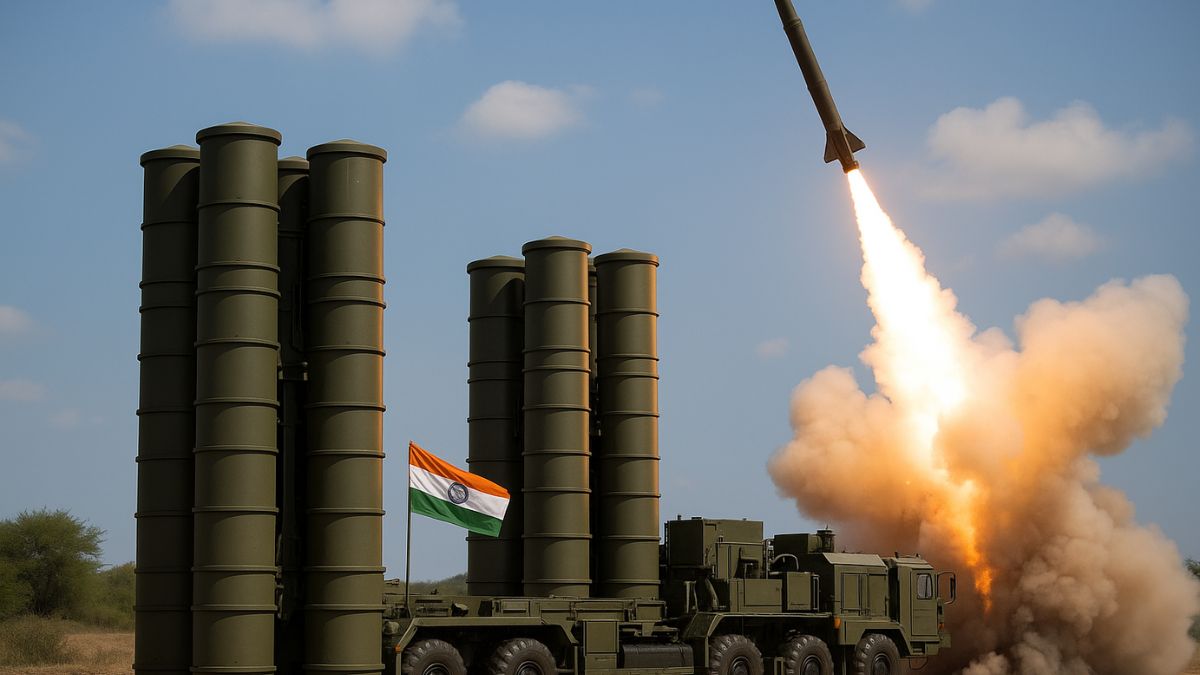India is preparing to test a new generation of interceptor missiles under Project Kusha, a key element of Mission Sudarshan Chakra (MSC), which is Prime Minister Narendra Modi’s ambitious plan to build a nationwide defence shield by 2035. The project promises to safeguard critical civilian and strategic assets.
As part of this ambitious project, the Indian Armed Forces aim to complete the development of 3 long-range surface-to-air missiles (LR-SAMs) and related systems in the next 3 years which could lead the way for their induction from 2030 onwards.
What will Project Kusha test?
As per senior officials quoted by The Times of India, the M1 interceptor, designed to tackle enemy aircraft, drones, cruise missiles and precision-guided munitions at 150 km range, will face its first trials in 2026. The M2, extending coverage to 250 km, is slated for testing in 2027.
By 2028, the M3, capable of intercepting threats at 350 km, is expected to join trials. The Defence Research and Development Organisation (DRDO) aims to complete all 3 by 2028, opening the door for induction from 2030. These long-range surface-to-air missiles (LR-SAMs) will be fully automated and comparable to the Russian-made S-400 Triumf, according to officials.
How does it compare with global systems?
India’s initiative has naturally drawn parallels with Israel’s Iron Dome which defends limited areas from short-range rockets, and also to the US’ futuristic Golden Dome project aimed at intercepting even space-based threats. The project is estimated to cost $500 billion over two decades.
Chief of Defence Staff General Anil Chauhan is confident India can chart its own path. Speaking at the Ran Samwad conclave in Mhow recently, he said the shield must combine both “soft and hard kills, kinetic and direct energy weapons,” acting not just as defence but as offence.
“It will act both as a shield and a sword,” he noted, echoing PM Modi’s call for a system capable of launching counter-strikes.
What role will India’s missile arsenal play?
Mission Sudarshan Chakra does not exist in isolation. It builds on a growing missile ecosystem that includes the Pralay ballistic missile (500 km strike range), the BrahMos cruise missile (now upgraded to 800 km), and a land-attack cruise missile under development with 1,000 km reach.
India’s ballistic missile defence (BMD) programme has also matured. Phase I – neutralising missiles up to 2,000 km away – is already operational. Last year, the DRDO tested a Phase II endo-atmospheric interceptor, capable of destroying hostile nuclear-capable missiles in the 5,000 km class.
What did the latest integrated test show?
On 23 August, DRDO successfully tested the Integrated Air Defence Weapon System (IADWS) off the Odisha coast. The trial combined QRSAMs (30 km range), VSHORADS (6 km range), a 30-kilowatt laser-based Directed Energy Weapon (DEW) with 3.5 km reach.
Additionally, 3 different aerial targets including high-speed unmanned vehicles and a multi-copter drone were simultaneously destroyed. Defence Minister Rajnath Singh hailed it as proof of India’s “multi-layered air-defence capability.”
However, General Chauhan has cautioned that the true test lies in integration. A “colossal amount” of coordination will be required across land, air, maritime, undersea and space-based sensors, he stated. Multi-domain intelligence, surveillance, reconnaissance, centralised command posts, and real-time communication between weapons will be essential.
“Many of the building blocks have either been developed or are being developed,” an official said. “The real challenge will be to integrate them all. And it will cost a lot of money for a country as vast as India.”
What makes Mission Sudarshan Chakra unique?
The project is designed to combine surveillance, cybersecurity, and layered air defence. It will tie into the Air Force’s Integrated Air Command and Control System (IACCS) and the Army’s Akashteer network, with private industry expected to play a major role.
The name Sudarshan Chakra is drawn from the mythic discus weapon of Lord Vishnu, symbolising both protection and precision strike. Officials describe it as a milestone that will make “national security impregnable” while enabling targeted retaliation against adversaries.
The road ahead: Can India deliver by 2035?
The mission’s success will depend on a blend of cutting-edge technology, funding, and time. If achieved, India could field one of the world’s most comprehensive defence shields by 2035. But as officials admit, the test lies not only in building powerful interceptors but in weaving them into a seamless, multi-domain shield capable of protecting a vast nation under fire.
